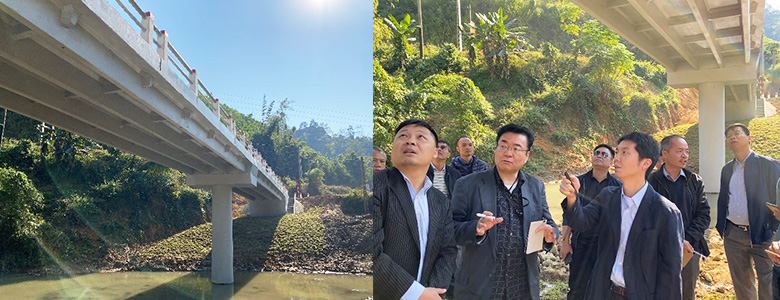December 11-12, 2019
Hanoi, Vietnam
Vietnam is prone to various natural disasters, including river floods, urban floods, landslides, cyclones, and others. These hazards often disrupt existing infrastructure, cutting off access to critical facilities such as hospitals, schools, jobs, hindering health and education and limiting opportunities for employment. To tackle these challenges, the $385 million World Bank financed Local Road Asset Management Program (LRAMP) was initiated in 2016 in Vietnam to construct more than 2,000 bridges nationwide with the objective to improve road and bridge connectivity for rural communities in Vietnamese provinces. As a pilot initiative, three bridges have been constructed using Ultra High-Performance Concrete (UHPC), which is a material known for its strength and durability, as bridges particularly resilient against natural disasters. The Global Facility for Disaster Reduction and Recovery (GFDRR) is supporting this program by providing financial and technical support to the design, construction, and assessment of these pilot UHPC bridges.
On December 11 and 12, Mr. Hiroyuki Musha from Taisei Corporation and Associate Professor Koji Matsumoto from Hokkaido University, who both contributed to the knowledge exposure visit in Japan, were invited to Hanoi to contribute to the assessment of one of the completed pilot bridges and to participate in the knowledge exchange workshop as part of the LRAMP activities. The deployment of the Japanese experts was supported and facilitated by the Tokyo Disaster Risk Management (DRM) Hub.
Assessment of Lang Co bridge in Thai Nguyen Province
The Lang Co vehicular bridge was one of the three pilot bridges constructed using UHPC to replace the temporary bamboo pedestrian bridge which connected two parts of the Lam Vy commune separated by the Van La stream. The temporary bridge required repair and replacement various times every year throughout rain season, however the UHPC bridge allows for increased economic activity on both sides of the river due to easier transportation of goods, less risk for village residents who were responsible for the repairing of bridges during floods, and prompted the provincial government to build another bridge to connect with further villages.
“The village residents are very happy with the bridge because it ensures stable access to both sides of the village, allowing children to go to school without disruption and residents to have access to the hospital throughout the year” -Mr. Mong Dinh Chuong, Chairman, Lam Vy Commune
Through the assessment, the Japanese experts shared information and recommendations particularly on the procedures of monitoring of UHPC bridges including risk mitigation measures based on the bridge’s design and local climate-related conditions which affect the bridge performance.

Knowledge Exchange Workshop
During the workshop, experts from the Directory of Roads in Vietnam (DRVN), universities, and private sector from Vietnam and Japan exchanged information on application and design of UHPC in both countries and had technical discussions on construction methods. Experts also discussed the possibility to scale-up LRAMP initiatives in UHPC bridge construction and exchanged ideas on how to maintain assurance of construction quality and areas of support required by DRVN moving forward.
Way Forward
Vietnam utilizes UHPC as a viable option for an environmentally and economically-friendly material for infrastructure that is resilient against harsh conditions and shocks caused by natural disasters. GFDRR and the Japan Program will continue their effort to support their initiatives and contribute technical expertise to construct resilient bridges.
